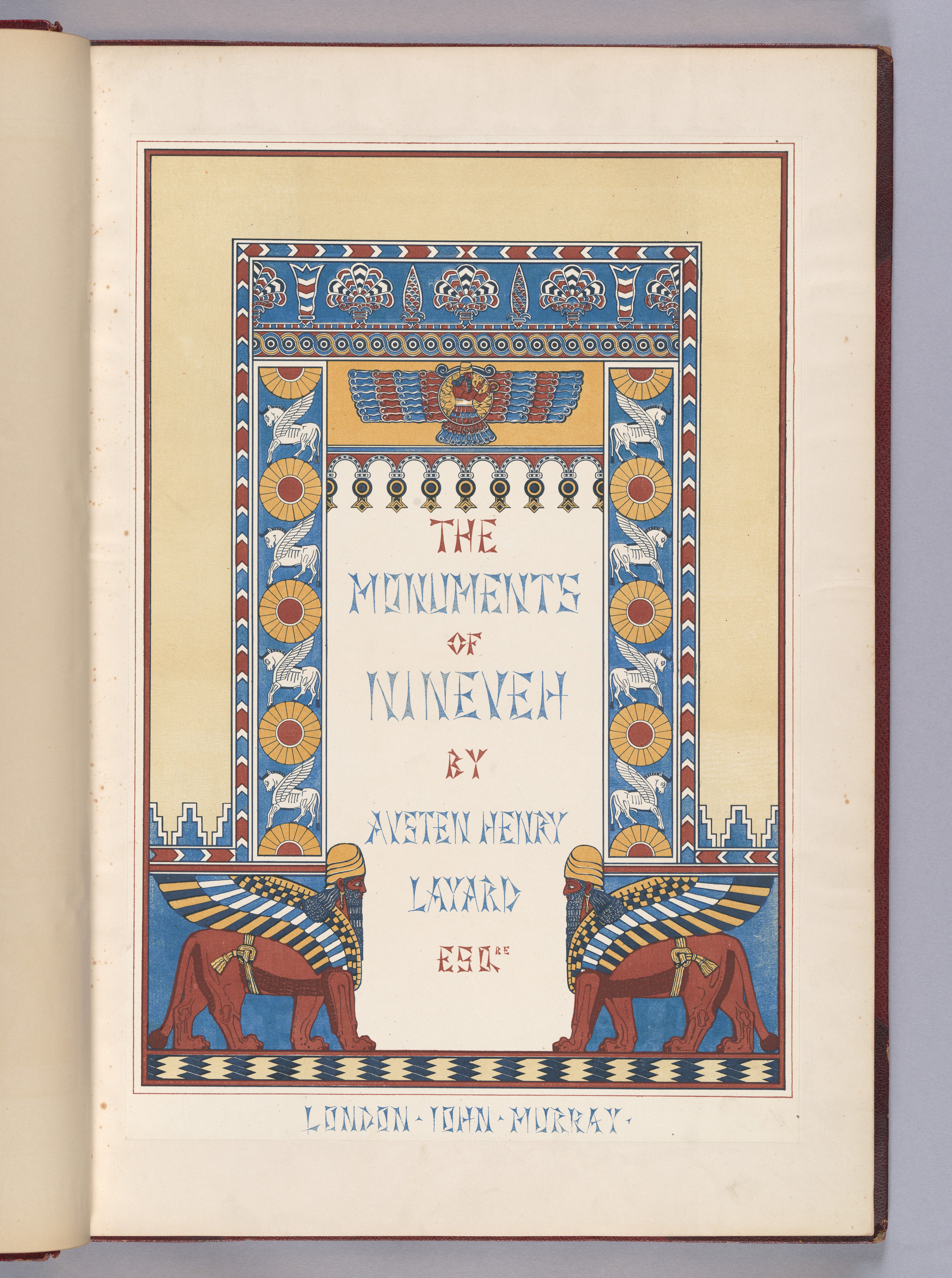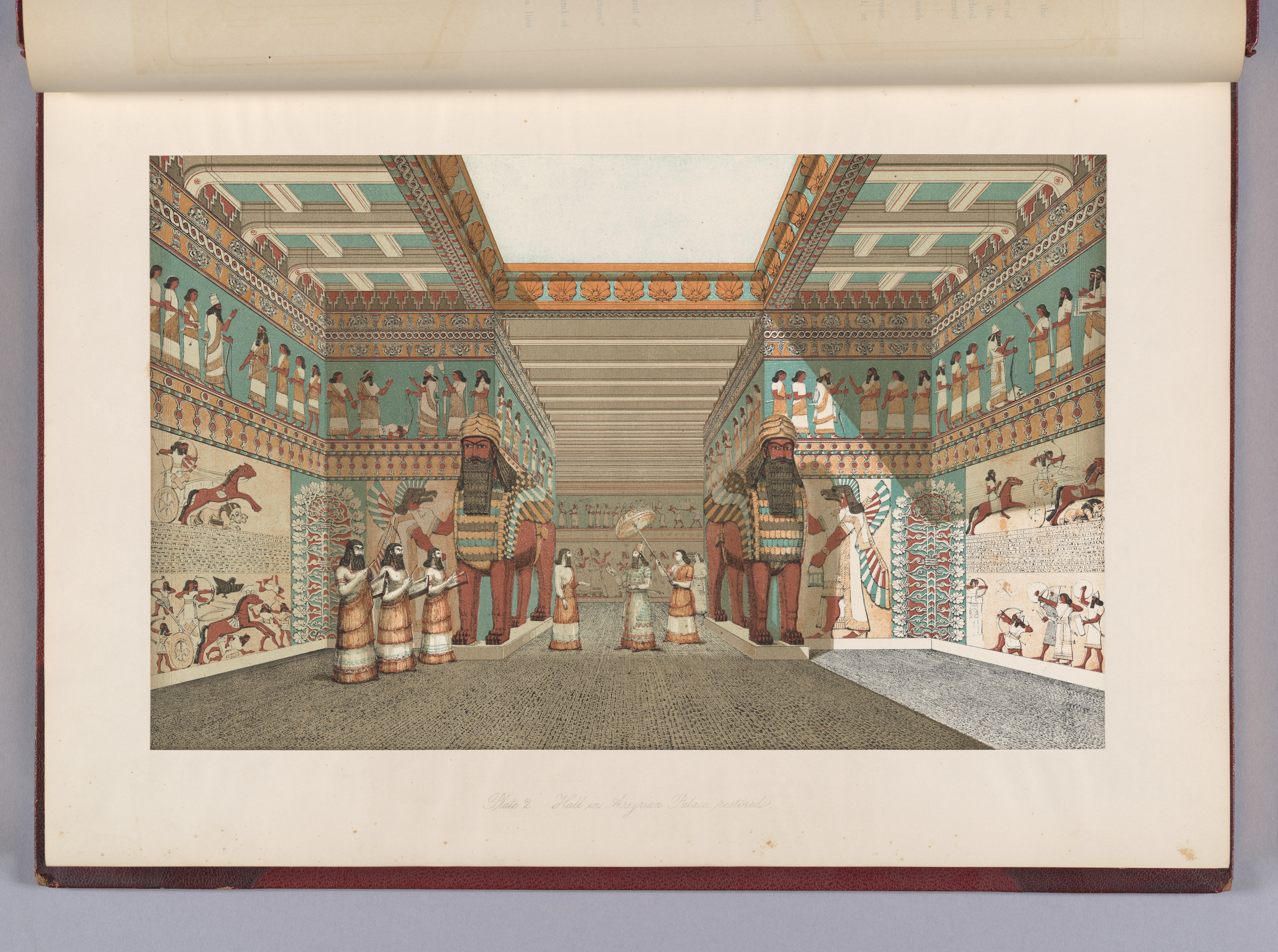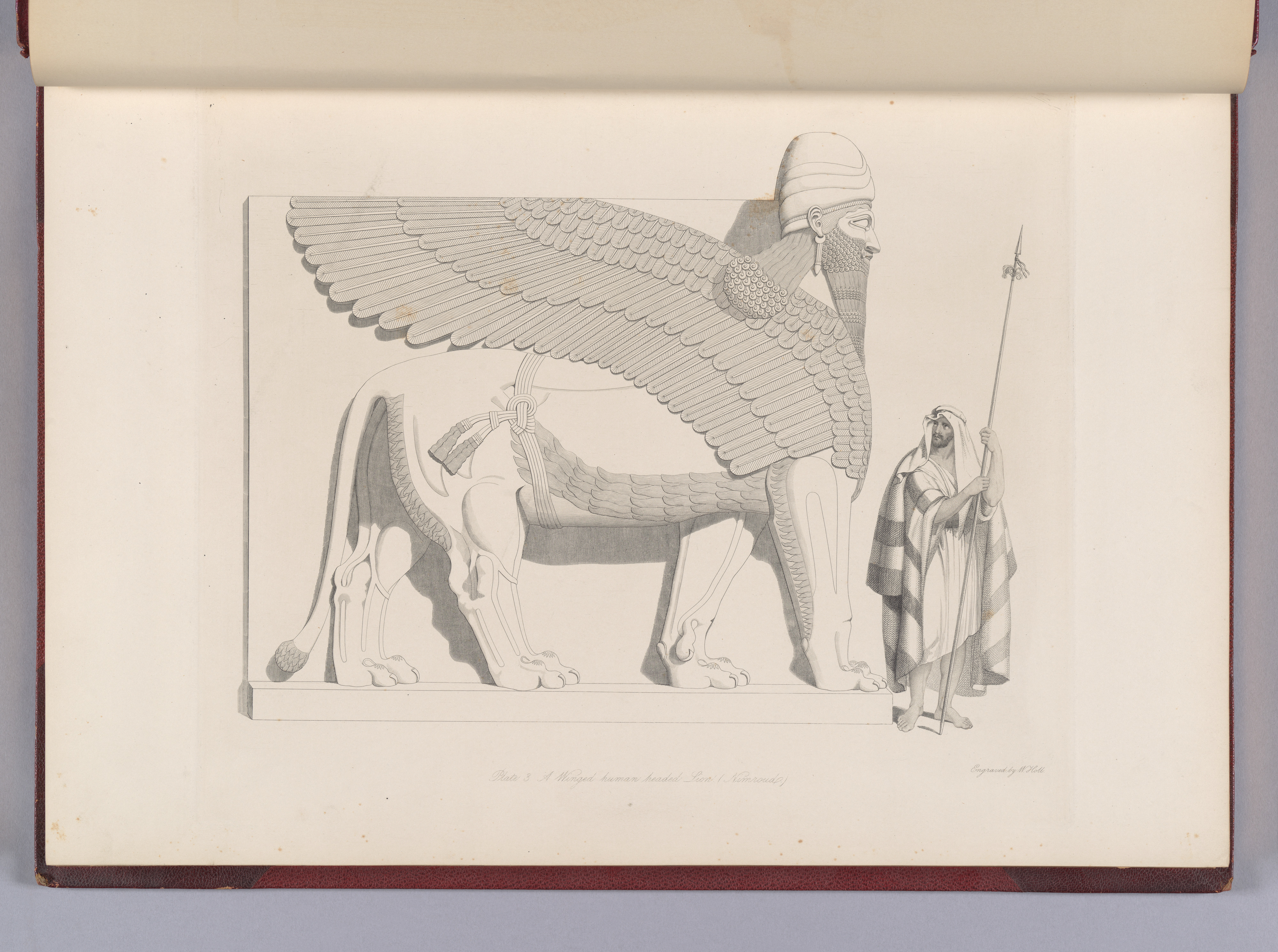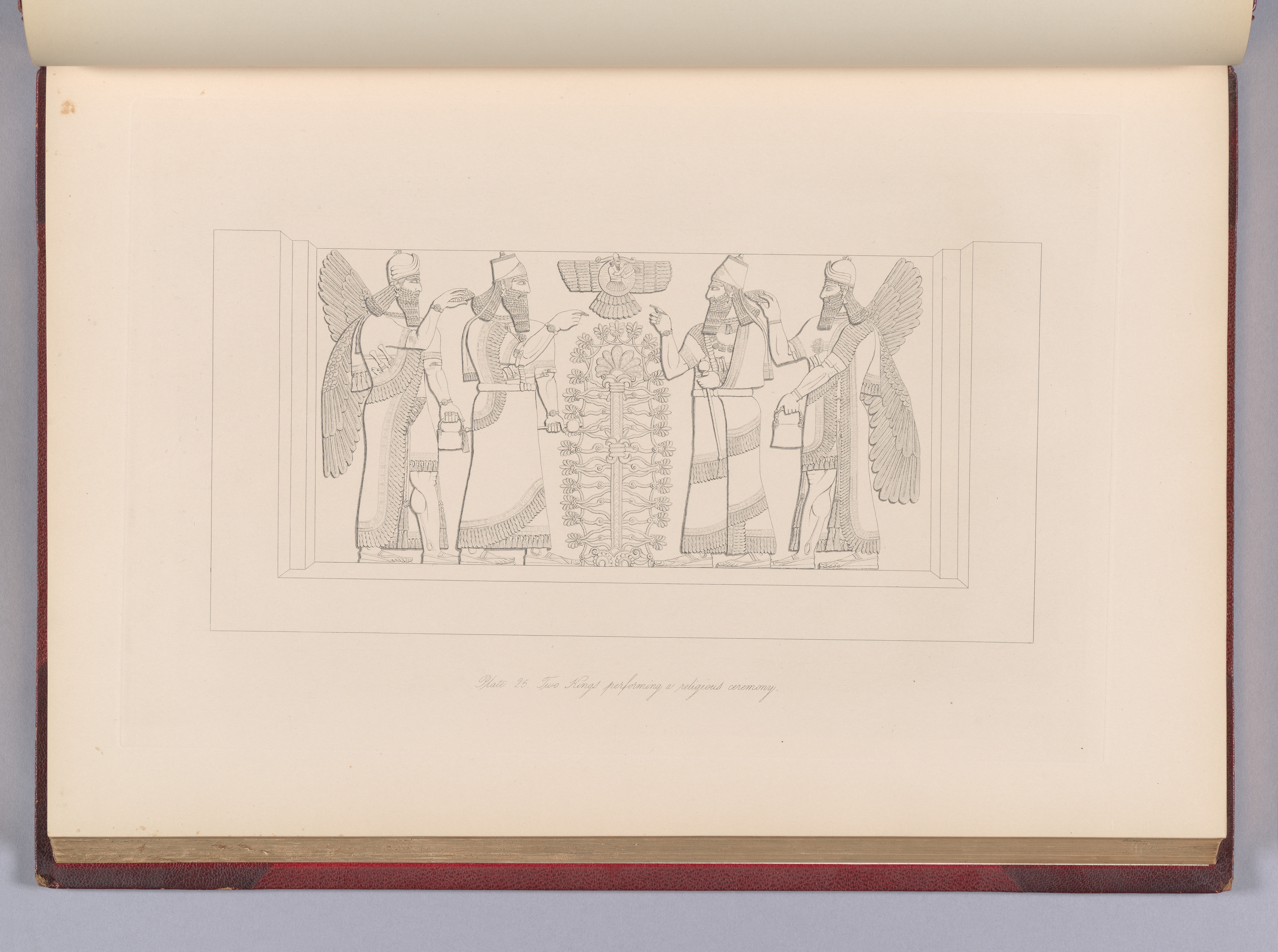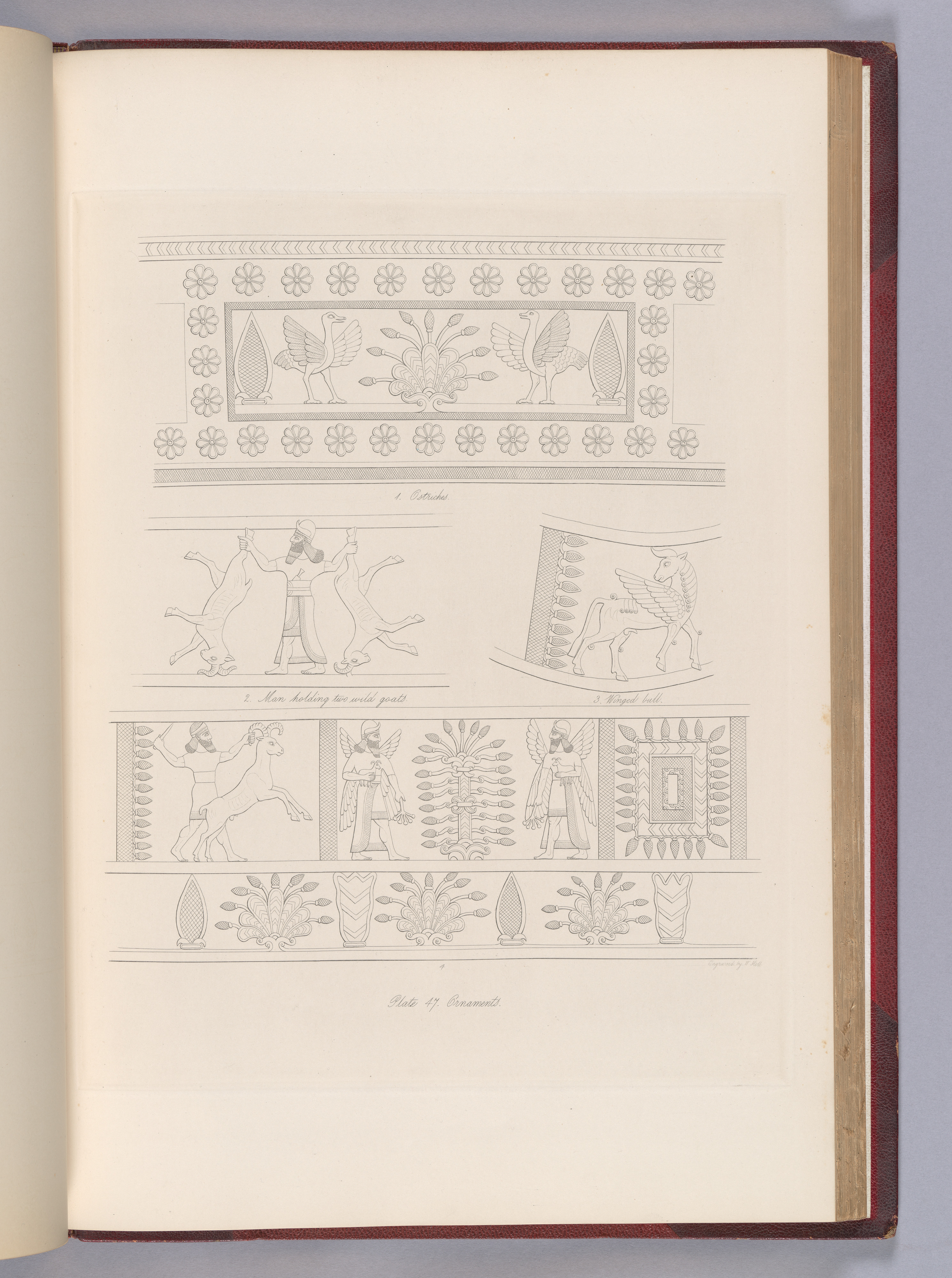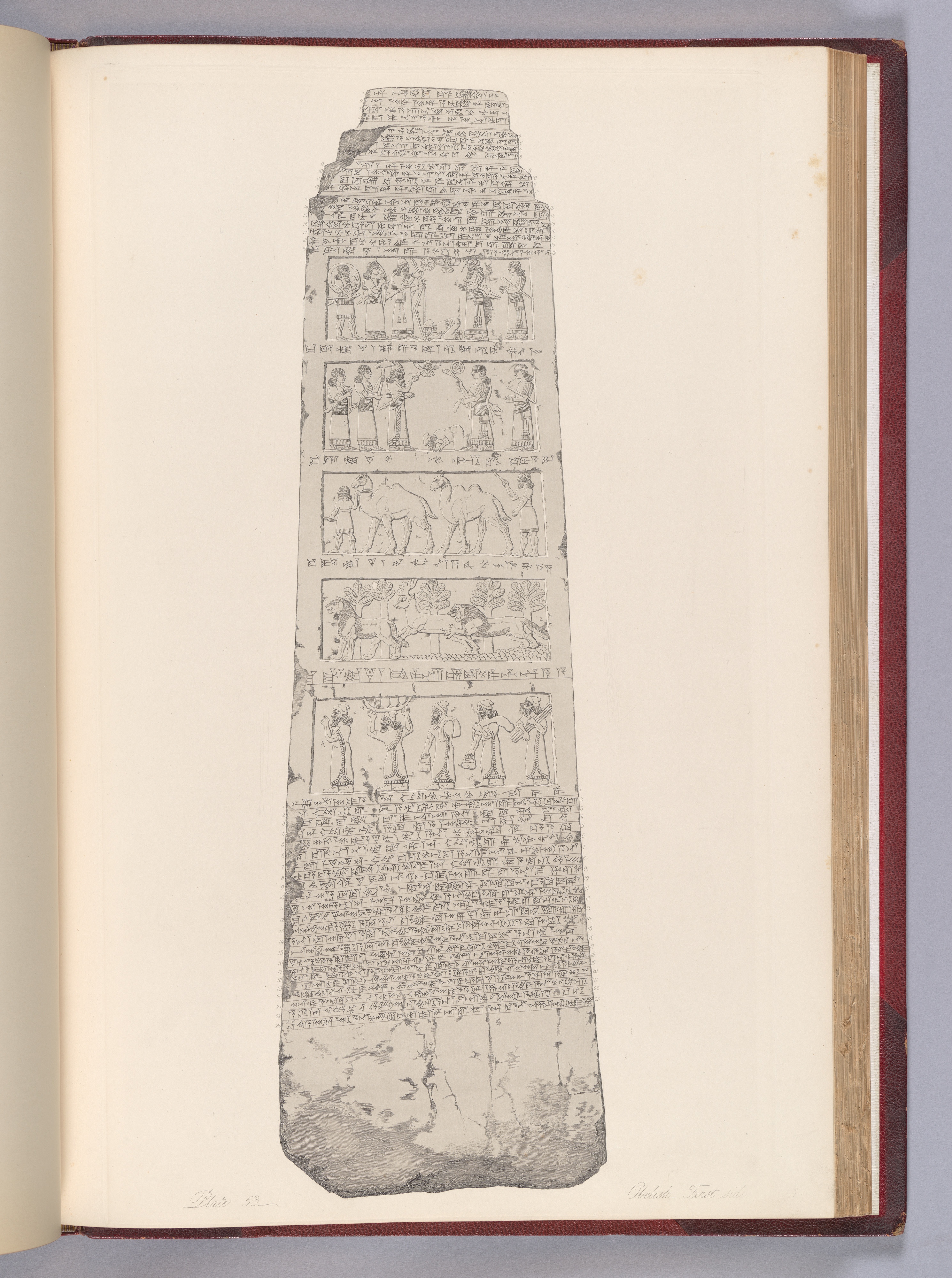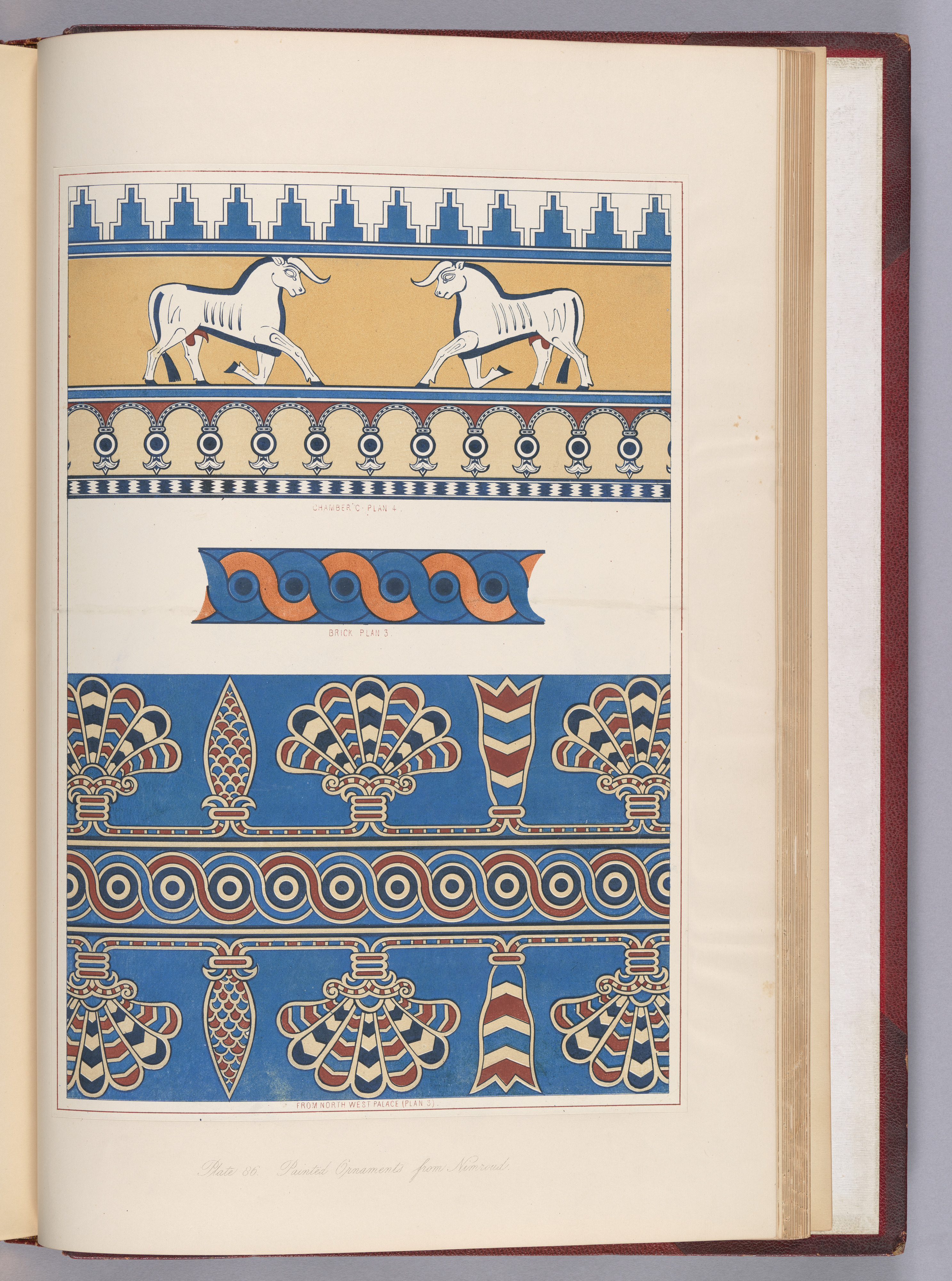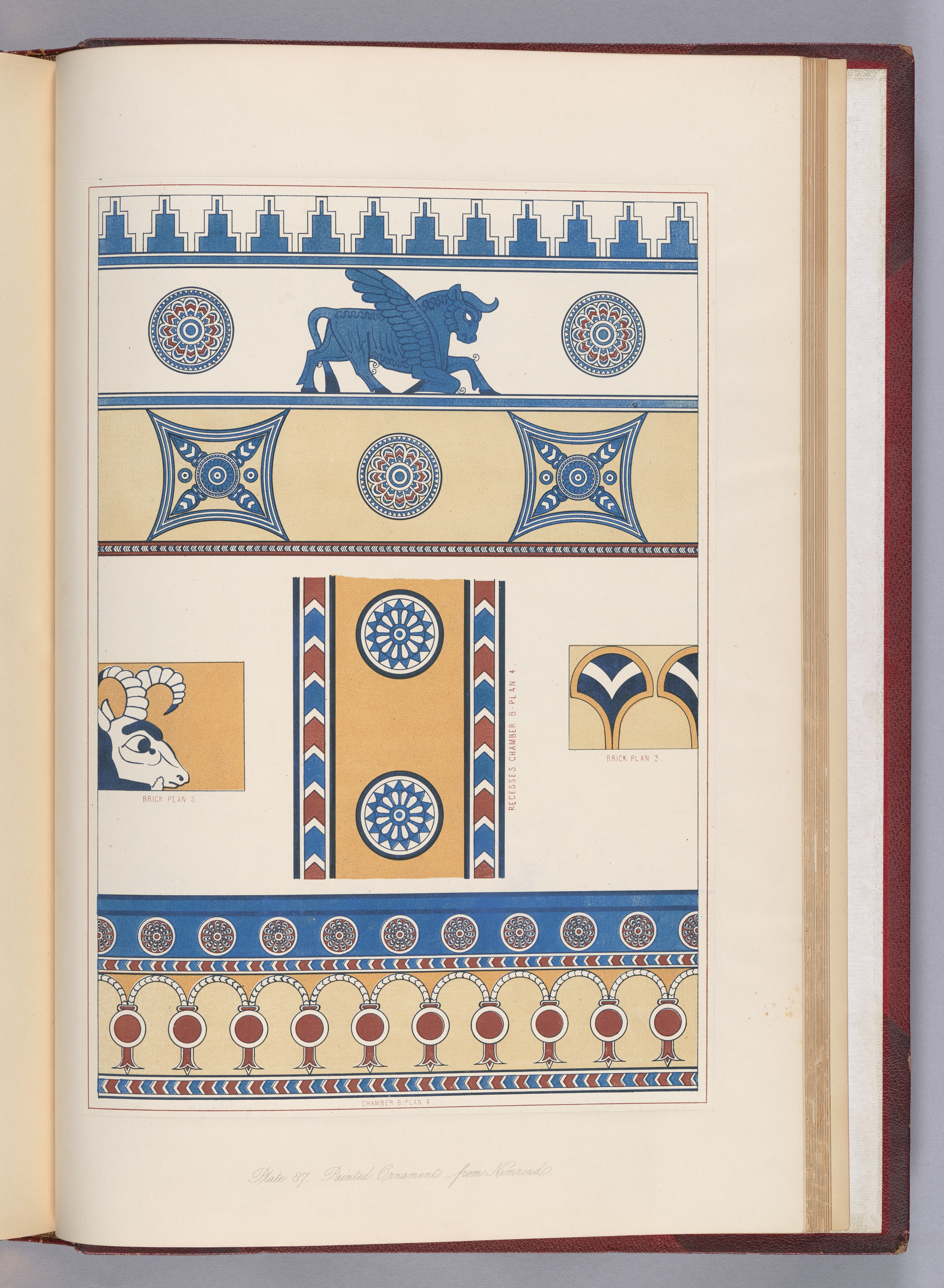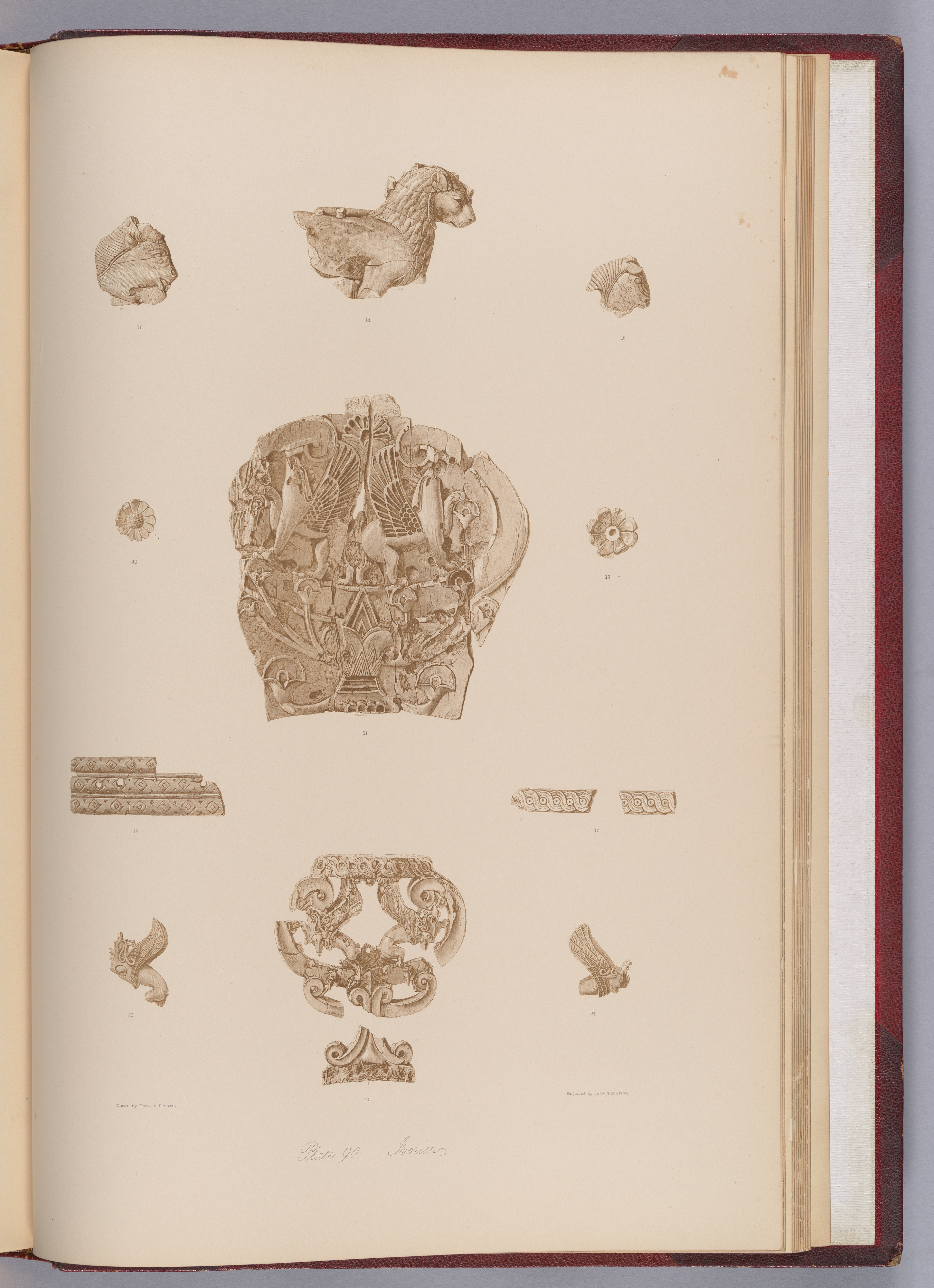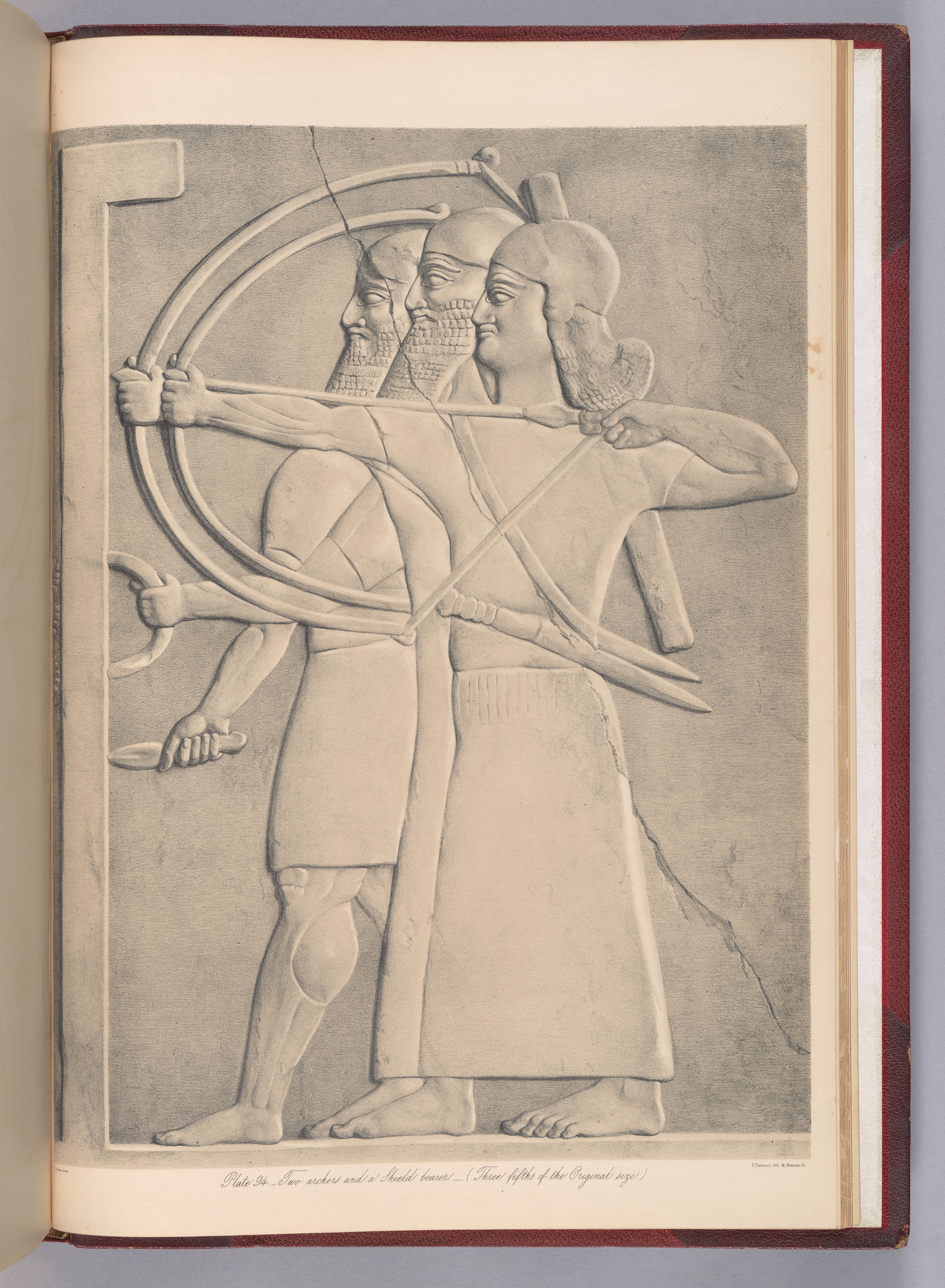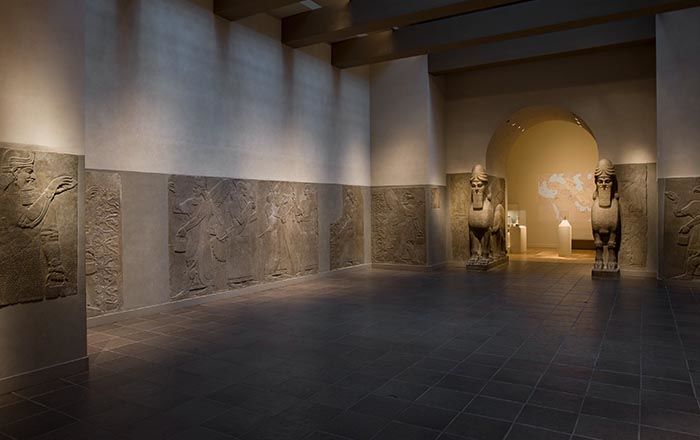The Monuments of Nineveh
Not on view
In the middle of the nineteenth century, French and British excavators uncovered the remains of ancient Assyrian palaces around Mosul in northern Iraq. The main British excavator at Nimrud (ancient Kalhu) and then Nineveh was Austen Henry Layard, a young English traveler who was inspired by Paul-Émile Botta’s first discoveries at Khorsabad (ancient Dur-Sharrukin) and began to excavate, supported by Stratford Canning, the British ambassador to Constantinople (today Istanbul). Like Botta, Layard found the remains of ancient Assyrian palaces whose walls were lined with stone reliefs depicting the king and courtiers, supernatural figures, military scenes, and royal hunts, and whose important gateways were flanked by colossal human-headed winged bull and lion sculptures. Although it was not clear at first which was the real site of biblical Nineveh, Layard and Botta assumed correctly that the palaces they were excavating were those of the Neo-Assyrian empire of the ninth to seventh centuries BCE, which previously had been known only through biblical and Classical tradition.
What Layard found was of interest not only to scholars but to a wide European public because of the biblical connections of ancient Assyria. The popular Illustrated London News covered the excavations in detail, and when Layard’s own first book, Nineveh and Its Remains (2023.712a, b), was published in 1849, it became one of the best-selling books of its time. In addition to the two-volume original, several abridged and cheaper editions were produced, increasing its readership still further. At the same time, Layard shipped many of the sculptures themselves to England, the majority to the British Museum, where they were the subject of further public fascination. In 1854, a colorful reconstructed ‘Nineveh Court’ was part of the Sydenham Crystal Palace, visited by millions of people until it was destroyed in a fire in 1866. Layard himself was heavily involved in the design.
The Monuments of Nineveh, and A Second Series of the Monuments of Nineveh (2023.720) published a few years later, were far more lavish publications than Nineveh and its Remains, produced for a small number of subscribers. The large-format volumes consisted mainly of fine lithographs, some hand-colored, based on Layard and other artists’ drawings of the palace sculptures. In the first volume Plate 2, titled "Hall in Assyrian palace restored," is the earliest serious attempt to reconstruct the original appearance of an Assyrian palace. The reconstruction was extremely colorful, a point that was important to Layard. He had seen the remains of pigment on some of the sculptures and fragments of wall painting above the reliefs, and here as well as in the Nineveh Court at the Crystal Palace tried to promote this mostly lost aspect of the sculptures.
This image cannot be enlarged, viewed at full screen, or downloaded.
This artwork is meant to be viewed from right to left. Scroll left to view more.



